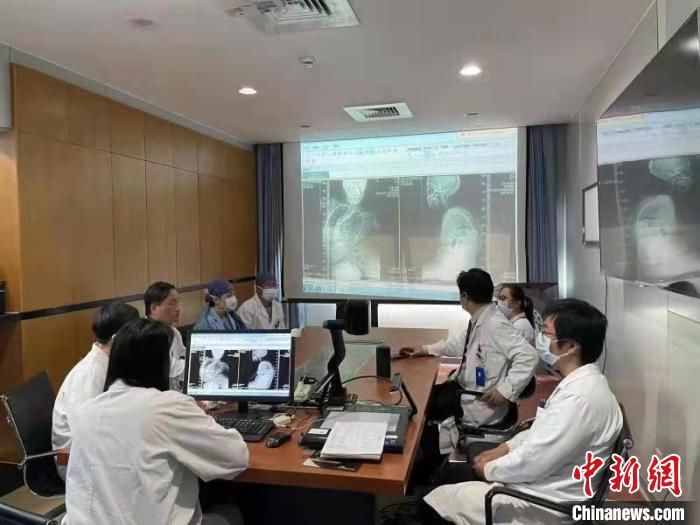
The SMA multidisciplinary team from Xinhua Hospital conducted an MDT consultation and diagnosed Tashiji with Spinal Muscular Atrophy (SMA-Ⅲ). Photo courtesy of Xinhua Hospital
Chinanews.com, Shanghai, February 27 (Reporter Chen Jing) Tashiji, a 23-year-old Tibetan girl from Gansu, has always been a “C” type in her life. She suffered from spinal muscular atrophy, which resulted in a scoliosis of 110 degrees, weakness in her legs and feet, and she was unable to walk normally. The reporter learned on the 27th that now, Tashiji has completed surgical treatment at the Spine Center of Xinhua Hospital Affiliated to Shanghai Jiaotong University School of Medicine.
Professor Yang Junlin, director and chief surgeon of the Spine Center of Xinhua Hospital, said: “For a long time, spinal orthopedic surgery has been regarded as a ‘no-go area’ for severe spinal muscular atrophy, but now, it is necessary to change the concept of SMA that ‘incurable equals incurable’ , to establish a new concept and confidence that comprehensive treatment can improve the condition.” Now drugs for the treatment of SMA have come out, and drugs can be used to delay the disease process. SMA patients and their parents should establish the concept of comprehensive treatment and establish the confidence that comprehensive treatment can improve the disease. “
It is reported that the SMA multidisciplinary team of Xinhua Hospital conducted MDT consultation and confirmed that Tashiji suffered from spinal muscular atrophy (SMA-Ⅲ), and formulated a corresponding treatment plan. Yang Junlin decided to perform scoliosis correction surgery for her, and applied for the assistance of Xinmiao Charity Fund for the girl from a poor family.
According to reports, spinal muscular atrophy (SMA) is a rare inherited neuromuscular disease. Severe muscle wasting and weakness due to genetic pathogenic variants on the associated chromosomes. Yang Junlin said that this is an invisible genetic disease that can lead to physical disability. The patient will suffer from physical weakness, loss of motor function, and death from respiratory failure as the disease progresses. The progressive disease will also lead to scoliosis, which will lead to the leaning of the body, and the patient can only be forced to sit in a wheelchair or lie on the bed with his hands; life safety.
For surviving type II and III SMA patients, more than 90% of them will develop scoliosis with the aggravation of the disease. Therefore, parents need to pay attention to it, and early detection and early treatment are particularly important. Yang Junlin said that the functions of all aspects of the body are declining day by day, but they are awake but weak, which is a huge damage and challenge to the patient’s psychology. “With the existing technical conditions, most of the patients can be treated with surgery,” he said.
In recent years, Xinhua Hospital has gradually improved the multidisciplinary comprehensive diagnosis and treatment of SMA, and established a corresponding standardized diagnosis and treatment system from diagnosis to drug treatment, from surgical treatment to postoperative follow-up. At the same time, the hospital also explored to break through the international “surgical forbidden area”, completed more than ten cases of spinal orthopedic surgery for patients with severe scoliosis and severe respiratory dysfunction SMA, established a mature and complete spinal orthopedic surgery process, and treated spinal deformities. The maximum degree reaches 176 degrees. (End)